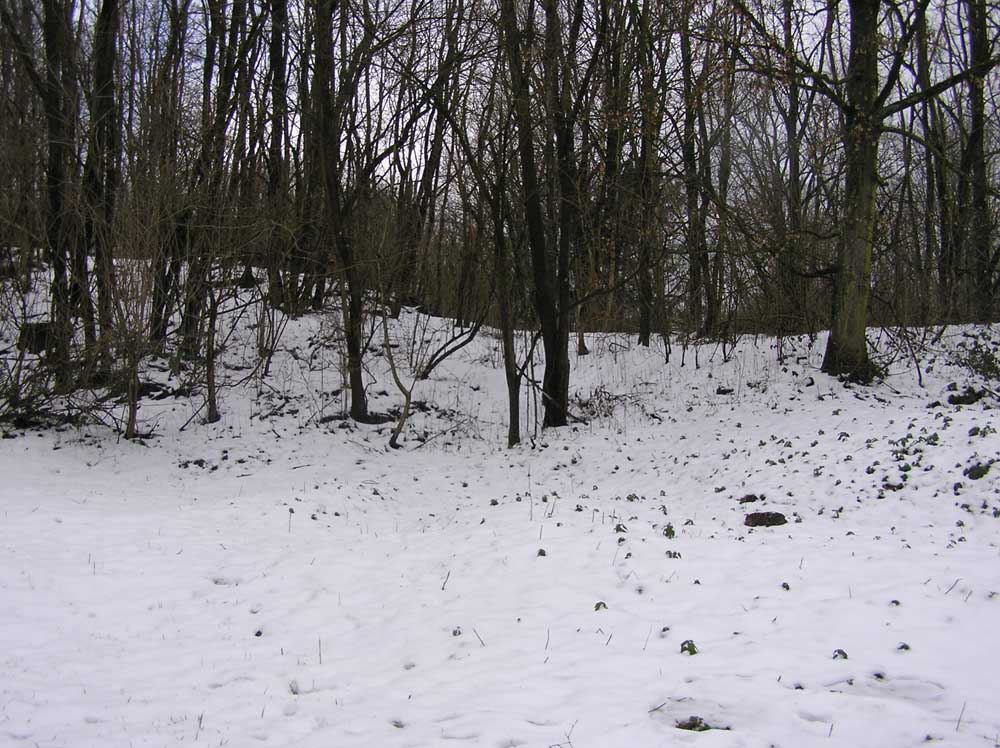Behind the protecting canal banks, both sides created semi-underground, linear towns. The British, and the Canadians who followed, rotated their regiments in and out of their positions too frequently for any real domesticity to thrive, but the same was not true behind the German frontier.
The corner of the Triangular Bluff, Kanalstellung II is the subject of this page, although it is just a tiny section of the longest linear housing complex in history. Each regimental sector replicated the essential wash rooms, kitchens, telephone exchange and coffee kiosks but probably nowhere was more comfortable than the village created byInfanterie Regiment 99 over the course of 1915.
In the above photo (credit: Philip Woets), we see the corner of the Triangular Bluff, or Kanal Düne, as it was known in 1915. Layers of dwellings spread up the side of the little hill. On the far right, the roof of the Pionier Depot can be seen behind the lower shoulder of the canal bank. Smoke issues from the Kaffeeküche. The grave markers of seventeen German heroes of 1914 look well tended.
Here are the original crosses, from the earliest days of these buildings. Behind on the left, Regiments Gefechtsstand, Fernsprechstelle (with chimney) and Kaffeeküche. Thanks to this photographer, we can move closer and visit the Kaffeeküche.
The cheeky face of Lt. Speyer (first on the left) appears in most of this photo set. When I stand there today, I wonder what happened to him.
After the Alsace Regiment Nr. 99 was replaced by regiments from Württemberg, these huts were completely rebuilt with more robust structures. All but the Kaffeeküche which simply gained a strengthened roof. The Kaffeeküche still attracts a crowd, along the Knüppeldamm on the right of frame.
Back in 1915, there was little nuisance from the Belgian-British artillery and relative peace at the Palingbeek front line for weeks at a time. In photographs, people look relaxed and the comforts and handicrafts of home villages are replicated in these temporary quarters.
There’s Lt. Speyer again, in the middle of the Knüppeldamm, a neat log path that ran for kilometres on end through this Corps’ sector. Between that and the canal the soldiers created a garden. Viewed today, there is indeed a single broom shrub Cytisus scoparius, not a plant seen anywhere else along the canal. Perhaps…..









